Born in 1995 in Ichinomiya City, Aichi Prefecture, Reima Noda is currently enrolled in a master's program in lacquer art at the Tokyo University of the Arts. We spoke with him about his work and his approach to "expressing oneself in this country" by experimentally transforming the formative qualities of natural objects such as insects and fruit into works that make full use of craft techniques and contexts.
 Evolution, 70.0 x 185.0 x 170.0, dry lacquer, silver leaf, luminescent shell
Evolution, 70.0 x 185.0 x 170.0, dry lacquer, silver leaf, luminescent shell
I get the impression that many of your works use insects and bananas as motifs, could you start by telling us about them?
-My works are based on insects such as beetles, and recently I have been using bananas as a motif in my works using lacquer. What I want to express is each story of nature. The content is very simple. My basic stance is to use nature as a target for my expression, and when I look at insects and nature, I think that the forms created by humans are no match for them. It's overwhelmingly amazing. We can't compete with the greatness of the shapes and colors created by nature. When I thought about what I, as a human being, could do, I thought it would be better to express and convey the story behind it, including the shape of nature.
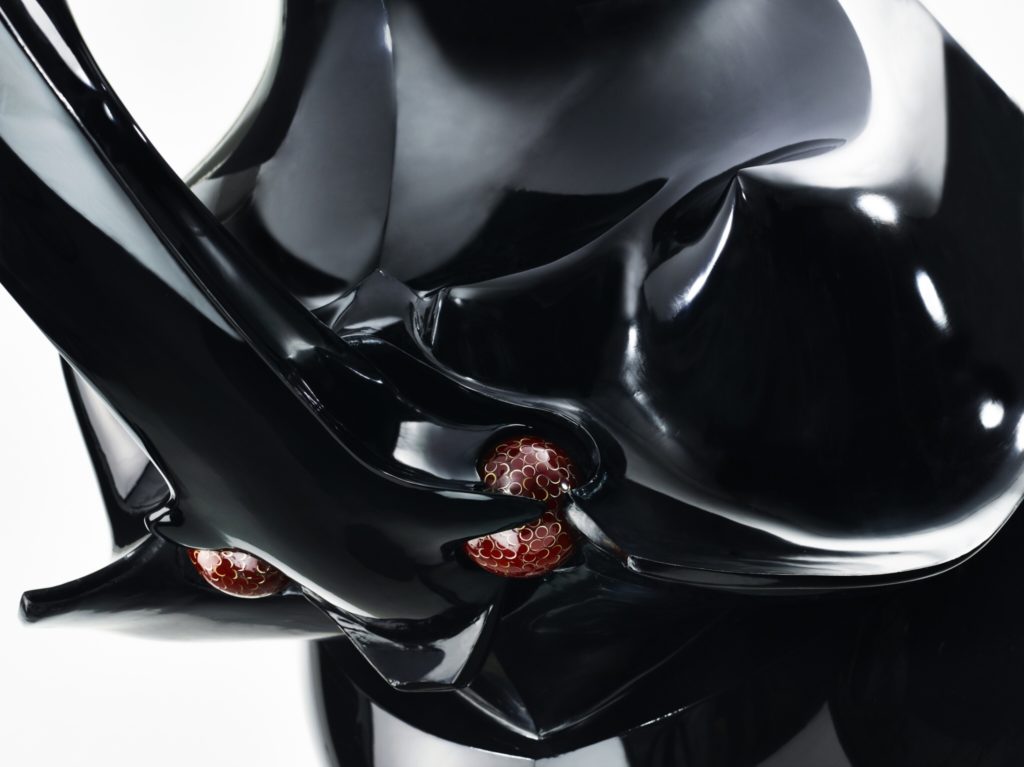
Do you owe much of your work to craftsmanship, such as the use of lacquer?
-It's partly because I myself studied in the field of crafts, but I think it's an important material when you want to create a formative expression in this country. Whether it is the climate or the culture, I think the characteristics and context of lacquer are very significant. And then there is the craft itself. This genre, for better or worse, has strong material limitations. There may be some downsides to this, but I think it is possible to get to the bottom of the materials and the surface treatment techniques are outstanding. I feel that there is a strong sense of responsibility for each piece of work, partly because there is a lot of work involved. That's one of the things I like about it.
But do you choose contemporary art as a destination for your presence?
-Yes, I want to show my work as contemporary art. I think I first became aware of contemporary art in my fourth year as an undergraduate. Originally, it wasn't about genre, it was about liking plastic arts. To put it another way, it's "something that can be completed with the eyes. The tendency for things to be complete without words was particularly strong in the world of crafts.
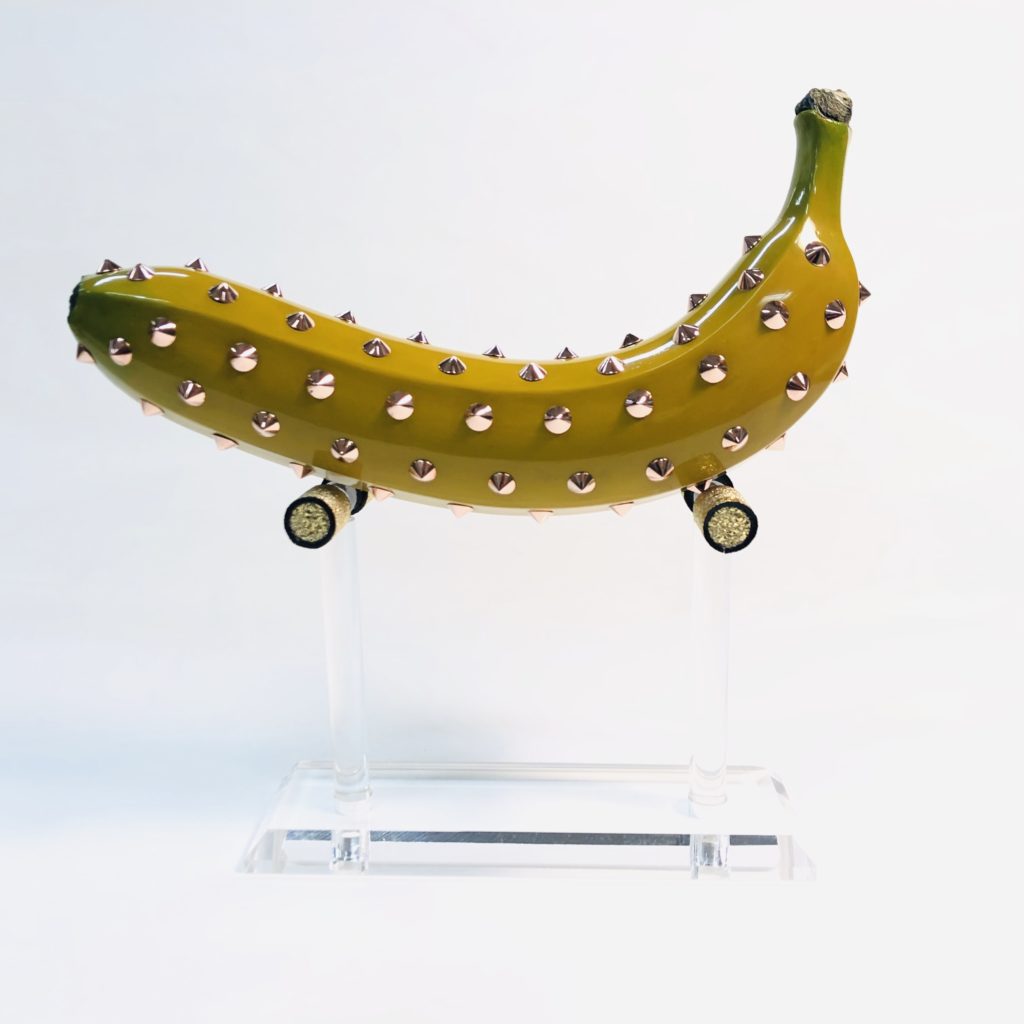 Vanana Stab, 20.0 x 11.3 x 4.6, dry lacquer on copper
Vanana Stab, 20.0 x 11.3 x 4.6, dry lacquer on copper
Are there any contemporary artists that you are paying attention to?
-The one who impressed me in the sense of doing something new is Demian Hirst. I don't care if it's trendy or not, but I think I'm influenced by works that change the way I value things. Hirst's work is one example, and then there is "The Fountain".
So you could have studied sculpture, but is that partly due to the problem of materials?
-Yes, there is that. To be honest, I thought that sculpture would be fine. But I thought that sculpture is too broad a genre, partly because it is less constrained by materials than craft. I thought that craft was the right method to learn first. When I thought of it as a means to express myself, craft seemed to fit well. I still want to make contemporary art my field, but I have no intention of abandoning the context of kôgei.
 Vanana Covering, 19.0 x 11.0 x 4.0, dry lacquer and eggshell
Vanana Covering, 19.0 x 11.0 x 4.0, dry lacquer and eggshell
Going back to your expression, you recently started a series of bananas. What is interesting to me is why you chose this fruit as a motif
-The first thing I decided to do was a graduation project. To be honest, it wasn't much of a motivation, I just thought it would be interesting to have a big golden banana. So I went to a farm in Chiba to see the real thing. That was quite a turning point for me, because the actual bananas were really cool. I was really impressed by the fact that there were two to three hundred of them growing on a trunk the size of my thigh, defying gravity. I was really impressed, and I thought to myself, "I shouldn't be deforming these things on my own. I thought it was still too early for me, so I took it home. It's only recently that I started working on it.
The criteria is whether or not I am impressed.
-Of course, that's part of it, but...well, this may be a bit of a leap, but when I think about the most important thing for art, I think it's positivity. I don't mean in a nice context or anything (laughs). (laughs) But I think the most important thing is to create something that makes you feel positive when you look at it. I think it's important to create something that makes the viewer feel positive, like a good memory, victory, or elation, rather than something that makes them feel negative. I want to create that kind of spirituality in my work.
 Vanana, 20.0 x 13.0 x 4.2, dry lacquer on abalone shell
Vanana, 20.0 x 13.0 x 4.2, dry lacquer on abalone shell
I'm curious about the background of your stance
-It probably started with a trip to Cambodia when I was a third-year undergraduate student. I received a scholarship to go to an area where there is lacquer, and while the gap between the rich and the poor is much greater there than in Japan, the temples are very lavishly built, and I was impressed by their religious sense. I think everyone has their own way of feeling happiness, but praying doesn't give you anything, and it may not change you physically. Still, at least to me, they seem to be making a positive difference in their lives. I want my work to be like that.
What are the works that have directly influenced this idea?
- "Vulgarly" is a work of a beetle. Anyway, I wanted to make a life-sized version of a human being. I imagined it as a being to be prayed to, so it needed to be that size. However, I wanted to create an incarnation of myself, or an ideal being. Then, when I thought about what would be appropriate to express in this country, I decided to use a beetle, as Japan has its own beetles. The use of gold leaf was also influenced by temples. Gold is a color that attracts people.
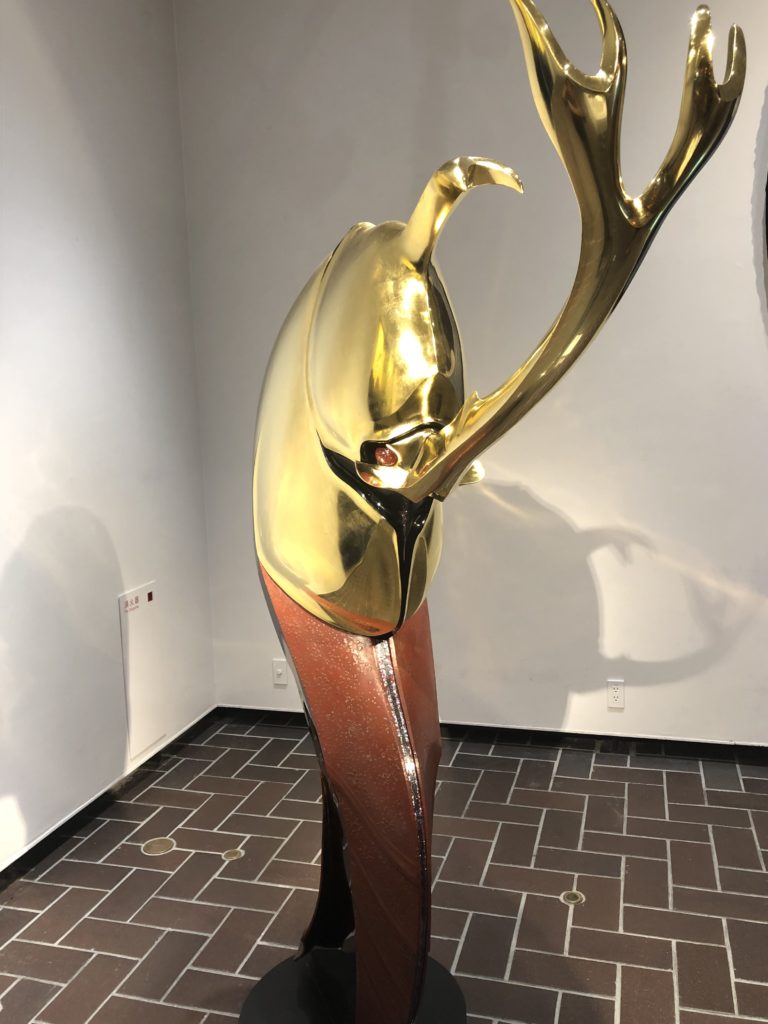 Vulgarly, 50.0 x 220.0 x 150.0 cm, dry lacquer, gold leaf, abalone shell
Vulgarly, 50.0 x 220.0 x 150.0 cm, dry lacquer, gold leaf, abalone shell
From what you've said, it sounds like your works are going in a symbolic direction
-Yes, it does. For example, a beetle is a symbol of a certain kind of strength. Like the helmets of warlords, I choose motifs that represent dignity and strength. In that sense, bananas are the same. We call it the "Vanana Series," and the initial "V" is the same as "Victory," and as I mentioned earlier, I think the powerful sense of life that bananas have can be a symbol of that.
While you have a clear concept, you also have a minimalist approach to expression, is this influenced by your feelings about natural forms?
-I don't know... but there is definitely a respect. This may be off topic, but I personally believe that all living things are born with the same meaning, and when I look at bananas and insects as equal living things, I feel uncomfortable judging them based on our unique sense of values, or using the same sense of time as humans. In other words, I wonder if it's okay to use the human side of the scale to express myself.
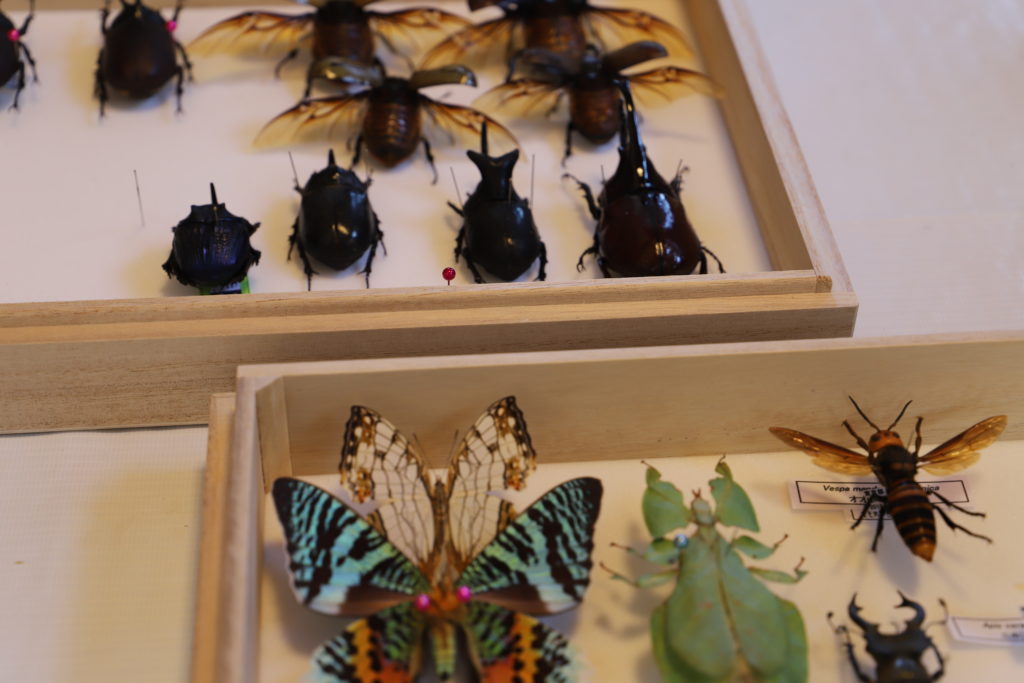
It's also connected to what you were talking about earlier, "What kind of expression can we do as human beings?
-Yes, that's right. For the bananas, I mold them from the real thing, because I want to express the evidence of the banana's life and growth as it is. I also take the energy that I felt when I saw it, and think about how to express it while being constrained by the color and shape, as well as the materials and techniques. There are many ways to look at insects, but I think they are cool and beautiful. That's why I don't think I should be making fun of them.
 Vanana Shachi" 20.0 x 12.0 x 3.8cm, dry lacquer, gold leaf, amber
Vanana Shachi" 20.0 x 12.0 x 3.8cm, dry lacquer, gold leaf, amber
The distance between your work and the words you were talking about seems to be close, are you aware of that? Are you aware of this?
- I am, and I'm glad that you think so. I'm glad that you think so. My feelings toward the motifs are the same, but also, as you said, I want the work to be complete with the eyes, and if that's the case, I think the distance between the first time you see it and what I want to say should be short. ...I'm not good at this kind of work, or rather, I'm personally not very good at reading abstract paintings (laughs). It's a little stressful. I like to look at things in general, but I also want to be able to see things completely. In that sense, I like sculptures and insects. I find insects to be the least stressful to look at.
Do you find that visuals come first in your work?
-Yes, definitely. The shape itself is done in the sketch at the beginning, but when I create it in three dimensions - in other words, when I sculpt it, I can't grasp it unless I have it as a shape. Also, I'm the type of person who creates the work itself based on a vague idea, and then solidifies the concept after the work is done. I'm the type of person who thinks with my hands. I'm not very good at the opposite. I'm not very good at the other way around. I think.
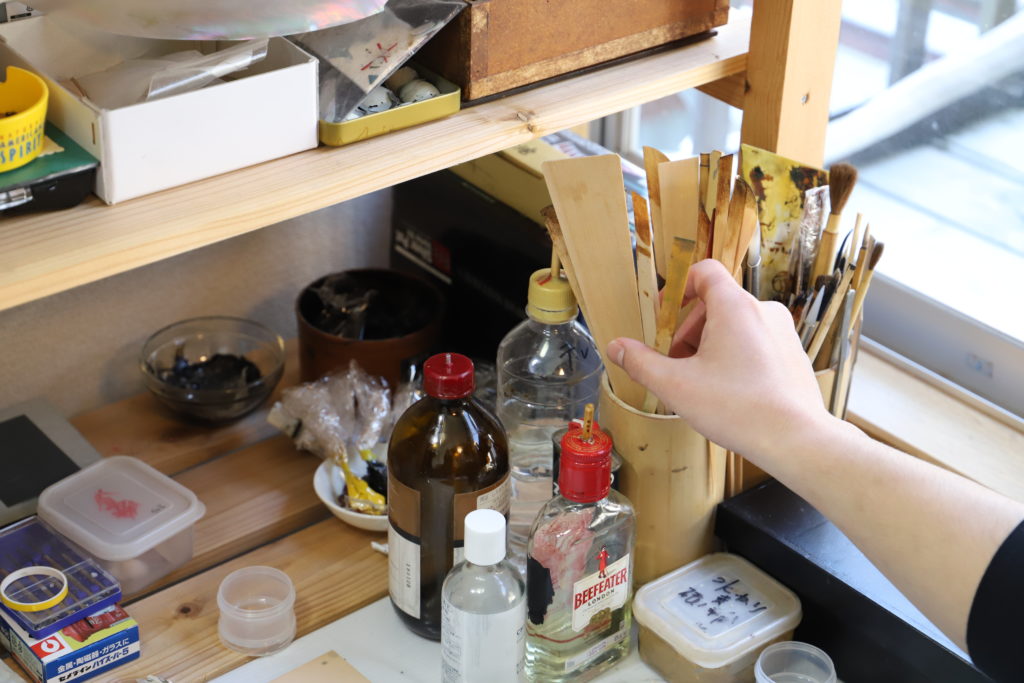
Returning to the genre, when you try to work in the field of contemporary art, does your background in craft get in the way?
-No, it doesn't get in the way. But in terms of expression, from a craft perspective, I am quite reckless. I solder and do other technical things, mostly. But I don't want to diminish the appeal of craftsmanship, and I believe there is definitely potential for it. ...However, it is true that (craft) tends to focus on techniques and materials, for better or worse. In the critiques, the level of the techniques used are compared to traditional crafts in museums. It's like, "No, look more at the aura of the banana! (laughs). (laughs) But that's okay. It's a difference in thinking. I think it's good that there are people with different ideas. I think it's important to talk about what you want to express and hit each other. I think it's important to talk about what you want to express and to confront each other.
I find that attitude interesting. Finally, is there anything you want to challenge or plan to do in the future?
-Right now, I'm brushing up. Rather than something new, I'd like to dig deeper into the bananas I'm working on and my current expressions. It's also the time of year when I'm completing my graduation project, so I'm trying to figure out how to evolve what I want to say so that it can be conveyed more easily, and I think now is the time to refine that. I want to share my work with as many people as possible, so yes, I would like to make it more communicable. Right now, there are some points where I think, "This part is not good enough. I'd also like to aim for something that's flamboyant and overdone like a beetle (laughs).
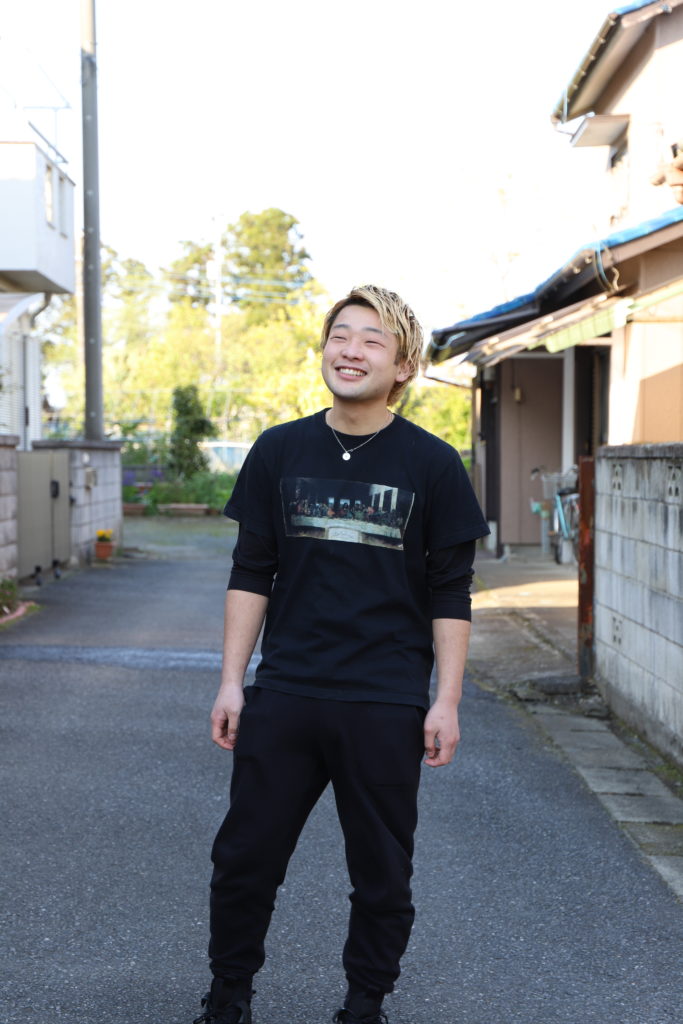
Ryoma Noda
Born in Ichinomiya City, Aichi Prefecture in 1995, Ryoma Noda graduated from the Design Department of Aichi Prefectural High School of Engineering in 2014 and entered the Department of Crafts at Tokyo University of the Arts in 2015. Last year, she won the Toride City Mayor's Award at the Tokyo University of the Arts graduation exhibition. He is currently enrolled in the master's program in lacquer art at the same university
Works page
https://www.tricera.net/artist/8100422https://www.instagram. com/ryoma_noda/?hl=en